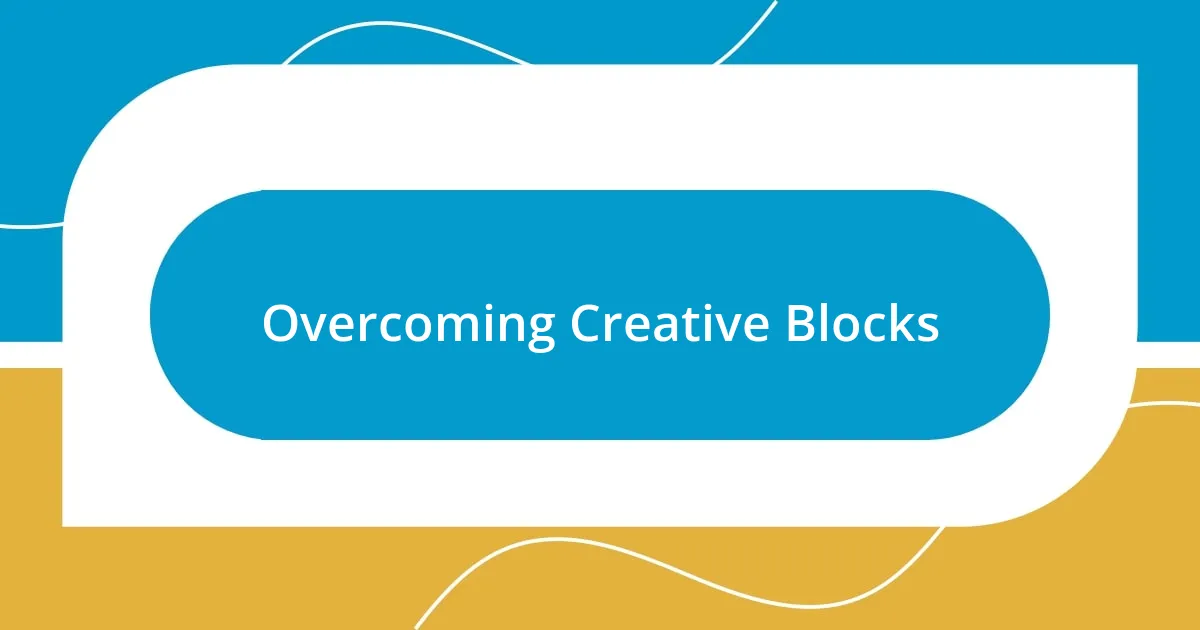Key takeaways:
- Daily sketching enhances creativity, mindfulness, and appreciation of surroundings, serving as a reset for artistic expression.
- Effective techniques such as gesture drawing and starting with basic shapes can significantly improve sketching skills.
- Choosing the right tools, like quality sketchbooks and a range of pencils, can influence the emotional impact of artwork.
- Sharing sketches with others fosters connections and enhances the creative journey through feedback and shared experiences.

Benefits of Daily Sketching
Daily sketching has been like a reset button for my creativity. There were days when I felt stuck, unable to capture the ideas swirling in my mind. But making a habit of sketching has not only sharpened my observation skills but also opened my eyes to the little details around me. Have you ever noticed how a brief doodle can transform your mood? It’s almost magical.
I remember an afternoon when I decided to sketch the trees in my backyard. It started as a simple exercise, but I found myself lost in the shapes and shadows. That hour of drawing reignited my passion for nature, reminding me that beauty lies in the ordinary. This sense of connection is a powerful benefit of daily sketching; it cultivates mindfulness and encourages us to appreciate our surroundings.
Additionally, the practice of daily sketching has significantly boosted my confidence as an artist. Initially, I was hesitant about my skills, but with every stroke, I became more comfortable expressing my thoughts visually. Isn’t it amazing how committing to a simple daily routine can transform not just our artistic abilities but also how we view ourselves? Each sketch becomes a testament to our growth, one line at a time.

Techniques for Effective Sketching
When it comes to effective sketching, I’ve discovered a few techniques that really elevate my practice. For example, using quick gestures to capture the essence of a subject helps me focus on the overall form rather than getting bogged down in details. One day, while sketching the bustling café scene, I felt liberated by letting go of perfection. The energy of the place came alive on the page, reminding me that capturing a moment is often more important than creating a flawless drawing.
Here are some techniques that have worked wonders for me:
– Start with Basic Shapes: Break down complex objects into simple forms like circles and rectangles.
– Practice Gesture Drawing: Quickly sketching live subjects in under a minute helps train my eye to see movement and proportion.
– Vary Your Materials: Experimenting with different pencils, inks, and papers can inspire creativity.
– Incorporate Shadows: Adding shadowing to give depth makes my sketches pop with a sense of realism.
– Limit Yourself: Setting time constraints pushes me to focus and make quick decisions, often leading to surprising results.
Each of these techniques is a part of my daily adventure in sketching. Embracing them has not only refined my skills but also deepened my engagement with the world around me.

Tools for Daily Sketching
When it comes to tools for daily sketching, I’ve tried a variety of options, but a few stand out. My trusty sketchbook, for instance, is where I pour my daily thoughts and emotions. A thick, textured page can drastically change your experience; I prefer a sketchbook that feels good to the touch, whether I’m using pencils or ink. Sometimes, it’s surprising how the right surface can spark creativity; I’ve even had moments where I was inspired to sketch simply because the paper felt inviting.
As for pencils, I’ve become a bit of a connoisseur. I usually keep a range from HB to 6B handy. While the HB is great for outlines, those softer pencils add a nice depth I can’t resist. One afternoon, while sketching a whimsical scene of my cat lounging in a sunbeam, the 6B pencil allowed me to play with contrasts, bringing the character to life in a way I hadn’t anticipated. It’s this subtlety in tool selection that can enhance an artwork’s emotional impact, something I cherish more and more with each sketch.
Lastly, I find that pen and ink are simply magical. They offer a permanence that can be daunting yet liberating. I remember a moment when I decided to sketch the evening skyline of my city using fine-liners. Each stroke felt decisive, almost like capturing the heartbeat of the scene. The experience taught me that embracing uncertainty with a tool like ink can lead to beautiful, unexpected results. It’s not just about the tools, though; it’s about how they shape my creative dialogue with the world.
| Tool | Description |
|---|---|
| Sketchbook | Thick, textured papers foster creativity and comfort for everyday sketches. |
| Pencils | A range from HB to 6B offers versatility for outlines and depth. |
| Pen & Ink | Provide permanence and encourage bold, decisive expression in my sketches. |

Overcoming Creative Blocks
Creative blocks can often feel like a thick fog rolling in, obscuring my inspiration. On days when I feel stuck, I’ve learned to take a step back and engage in a completely different activity, like doodling mindlessly or even taking a walk. It’s surprising how moving my body or shifting my focus can clear away those clouds and reignite my creative spark.
There’s a simple but effective strategy I sometimes use: I set a timer for just five minutes and draw anything that comes to mind—without worrying about the end result. I recall one instance, drawing random lines and shapes, I accidentally created a funny character that made me laugh. This unexpected joy reminded me that creativity doesn’t always need to be serious; playfulness often opens the floodgates.
I frequently remind myself that perfection isn’t the goal during sketching. I’ve experienced days when I’ve spent hours fighting frustration because my sketches didn’t match my vision. Yet, when I embrace my imperfections, like a quirky proportion or a stray line, the process becomes so much more enjoyable. Why do we hold ourselves to such high standards when creativity is all about exploration? Finding beauty in the mistakes has become one of my greatest lessons, transforming those blocks into beautiful detours.

Analyzing Progress in Sketching
As I reflect on my progress in sketching, I notice how my perception of improvement has evolved over time. Initially, it was easy to focus solely on the technical aspects—like how accurately I could replicate what I saw. But now, I recognize that growth is also about the stories I tell through my sketches. For example, when I sketched a bustling market scene, it wasn’t just about the people and objects. It was about capturing the vibrant energy and emotions that surrounded me, something I hadn’t fully appreciated in the past.
I’ve kept a visual diary of my sketches, and flipping through those pages has brought me a surprising amount of clarity. Each drawing represents a snapshot of my journey—a tangible record of where I started and how far I’ve come. One evening, while studying my older sketches, I found myself grinning at a messy drawing I did of my dog. At the time, I felt frustrated, yet now it’s a cherished memory, reminding me of joyful moments shared. Isn’t it fascinating how our perspective shifts over time? It’s like seeing a friend grow; you recognize their progress even when they can’t.
Another crucial insight has been the importance of self-critique. Rather than dismissing my earlier works as ‘bad,’ I’ve learned to analyze them constructively, asking myself, “What was I trying to convey here?” This mindset shift has been liberating, as it helps me appreciate each sketch’s unique context. The other day, I revisited a failed sketch of a tree. While it didn’t resemble the majestic oak I aimed for, I realized it perfectly captured the light filtering through its leaves—a beautiful accident. This clarity makes me eager to keep creating, knowing that even perceived failures can lead to unexpected revelations in my artistic journey.

Incorporating Sketching into Routine
Incorporating sketching into my daily routine has been a game changer. I started small, dedicating just ten minutes each morning to put pencil to paper. This simple act not only wakes up my creativity but also serves as a warm-up for the day, much like stretching before a workout. I can’t tell you how often those morning sketches lead to spontaneous ideas during my regular tasks.
As I made sketching a habit, I found unexpected pockets of time in my day. For instance, while waiting for my coffee to brew, I started doodling in my notebook. One day, during a particularly mundane meeting, I sketched the whimsical shapes of clouds passing by outside the window. Even those few minutes of drawing transformed my day, allowing me to infuse some joy into an otherwise dull moment. Have you ever noticed how even brief creative acts can shift your perspective?
Now, I’ve woven sketching into various moments throughout my day, rather than seeing it as a chore. Whether I’m at my desk, out with friends, or even going for a jog, I try to keep a small sketchbook handy. The other day, I sat on a park bench and quickly sketched the intricate details of the leaves swaying in the breeze. I felt such a deep connection to nature in that moment. Isn’t it wonderful when we find ways to integrate our passions seamlessly into our lives?

Sharing Your Sketching Journey
Sharing my sketching journey has become a delightful aspect of my creative process. It started with simply inviting friends to look at my sketchbook, and to my surprise, their reactions were surprisingly encouraging. One afternoon, I shared a sketch of an old tree I had admired, and a friend said it reminded them of their childhood treehouse. This moment ignited a beautiful dialogue about memories tied to art, emphasizing how sketches can unlock shared experiences that transcend the page.
I’ve also taken to social media to document my journey. Posting my daily sketches not only holds me accountable but also invites feedback from a vibrant community of artists and enthusiasts. I remember the thrill of receiving a comment on a whimsical doodle of a cat wearing a hat; it sparked a fun exchange about our favorite pet antics. Engaging with others in this way has deepened my understanding of different artistic perspectives. Have you ever felt that rush when someone connects with your work on a personal level? It’s a reminder that art, no matter how simple, has the power to inspire and resonate.
Finally, I’ve joined local sketching groups. Each session becomes a blend of learning and sharing, and it’s comforting to see fellow artists navigating their journeys too. One evening, while sketching alongside others in a park, I felt a bond form over our mutual struggles. It was heartening to hear that many started with the same insecurities I had. Sharing our stories not only enriches my journey but also creates a supportive environment where everyone feels encouraged to grow. Doesn’t it feel wonderful to know we’re not alone in our artistic pursuits?














